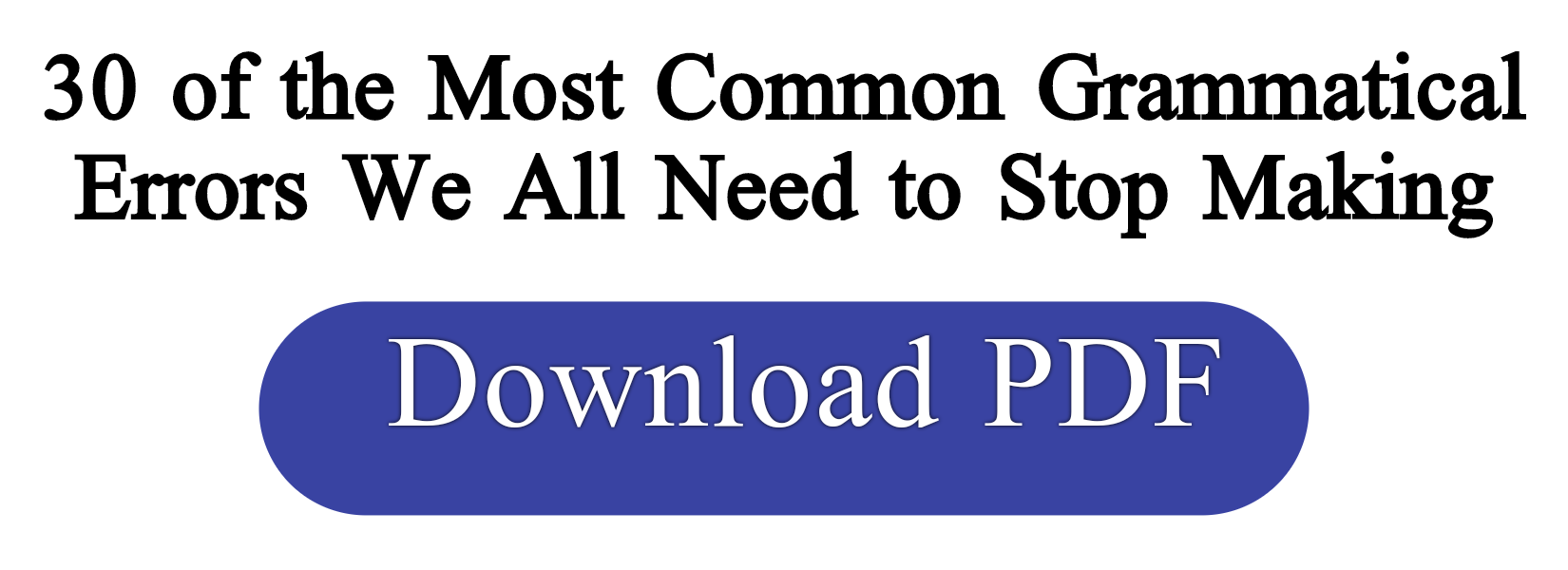One of the more challenging grammar concepts in the English language is the difference between the words that and which. Both serve a similar purpose, but the meaning of the sentence can change depending on which one you use.
The resource below breaks down the grammar rules associated with that and which and describes when to use each one.
Using That
Whether to use that and which depends on whether the clause it introduces is restrictive or non-restrictive. A restrictive clause means that the information in the clause is necessary to understand the preceding noun. For a restrictive clause, use that.
Let’s look at some sample sentences:
In this sentence, we understand that Brad has multiple sweaters, so it’s important to distinguish the one with the fancy elbow pads from the others.
Here, because not all laptops are used for gaming purposes, we use that to indicate the necessary information.
Once again, this sentence indicates there are multiple chairs in the kitchen, making it important to include a restrictive clause. Note that the restrictive clause does not necessarily need to be positioned immediately after the noun.
Using Which
Use which when the information in the clause isn’t necessary to understanding the noun in the sentence. This sort of clause is a non-restrictive clause. There is one other important distinction between restrictive and non-restrictive clauses: commas are used to separate the non-restrictive clauses from the rest of the sentence.
Here, the information about Stacy’s truck being red is not necessary to the sentence. Stacy only has one truck, so the extra information doesn’t help identify it. Therefore, we use which and separate the non-restrictive clause with commas.
Once again, we don’t need the information about the coffee and paninis to understand the rest of the sentence. We could omit the non-restrictive clause and still understand the sentence perfectly: “Paul’s favorite café is in Memphis, Tennessee.”
In this example, because all human hearts have four valves, the descriptive clause does not provide necessary identifying information to the sentence. Thus, we use “which.”
Before we move onto some practice sentences, let’s go back and look at ALL the sentences above and see how changing whether you use that or which changes the meaning of the sentence.
Here are the sentences that used that. Let’s see what happens if we use which instead.
In the second sentence, changing to which causes the sentence to imply that Brad only has one sweater.
Here, the sentence has changed to imply that the primary purpose of all laptops is gaming. Because not all laptops are used for gaming purposes, the sentence is not true.
Once again, if we use which, the sentence implies that there is only one chair in the kitchen.
Now let’s look at the sentences that used which and see how they change when we use that.
Here, the second sentence implies that Stacy owns multiple trucks, thus making it necessary to specify the red one.
In this example, changing which to that states that Paul is interested in many cafés that serve excellent coffee and paninis, and the sentences specifies that his favorite is in Memphis.
Similar to an example above, this sentence becomes factually incorrect when we change it from which to that, since all human hearts contain four valves, and it’s not necessary to specify that.
Practice Sentences
Take a look at these practice sentences below and see whether they need that or which. Don’t forget that which sentences need commas, too.
Answers
In the first sentence, we use which because it doesn’t make sense to have multiple classes starting at 10:30. This means the clause is non-restrictive.
In the second sentence, because there are many, many bands, we need to use that to specify the one we’re talking about, making it a restrictive clause.
The third sentence is a trick! Depending on what you’re trying to say, you may use either word! If there are multiple gyms five minutes from your house, you would use that to specify the one with the racquetball courts. However, if there is only one gym five minutes from your house, the clause is non-restrictive, and you would use which.








